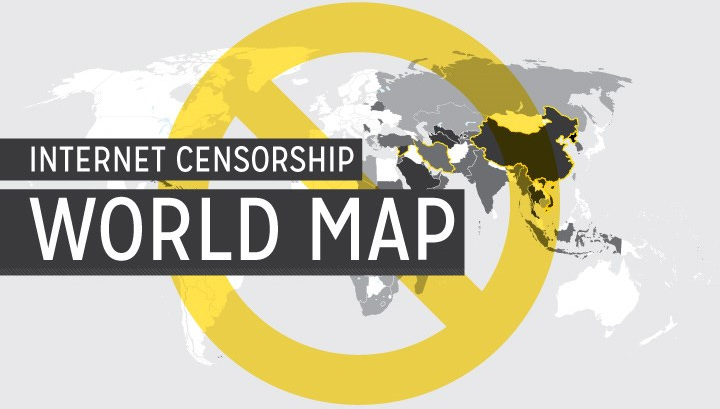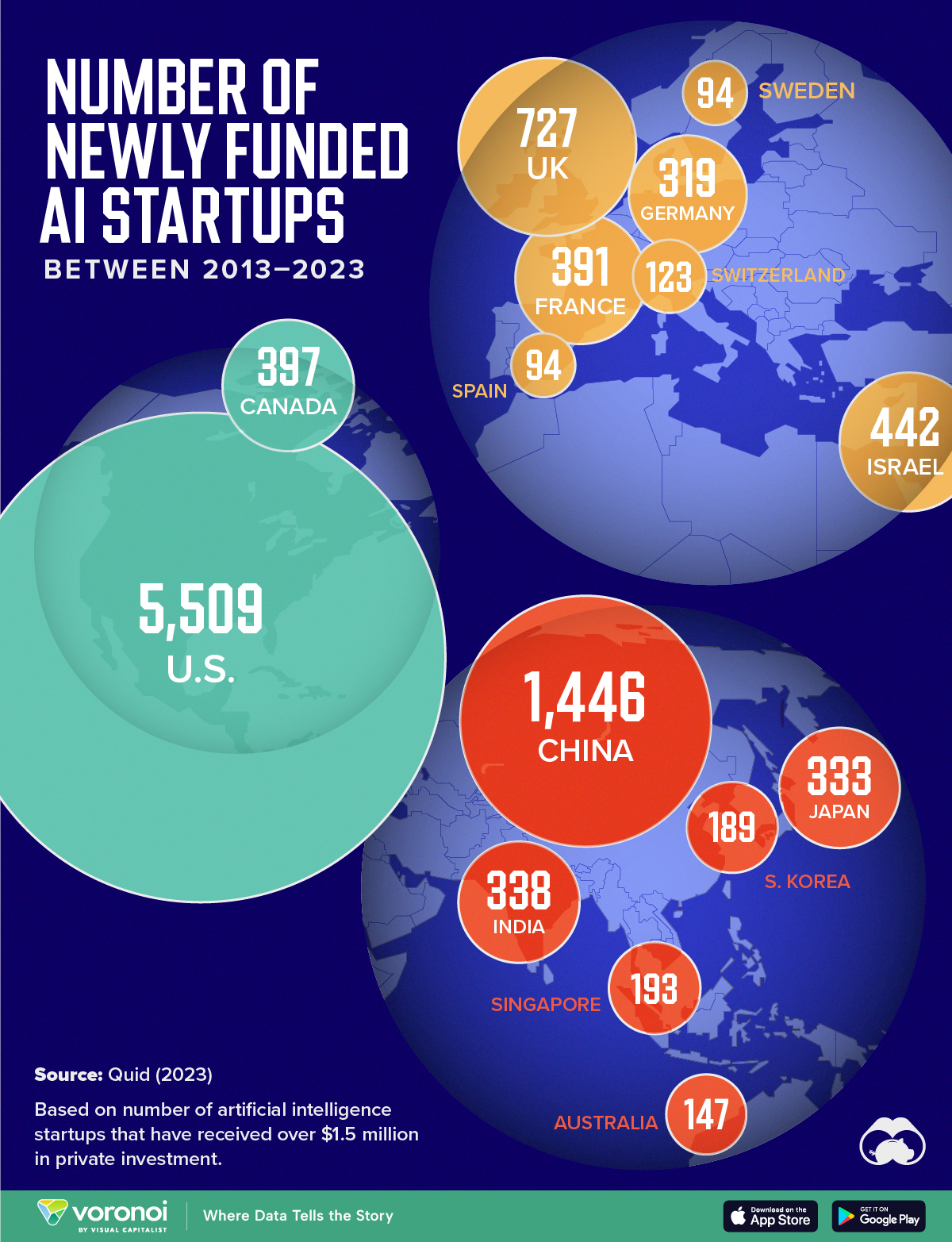Technology
Map: Internet Censorship Around the World
In January 2011, Egyptian activists, inspired by a successful uprising in Tunisia, began organizing a demonstration using Facebook. In a matter of days, thousands of protesters – who learned about the event through the social media platform – gathered in Cairo’s Tahrir Square to protest the longstanding Mubarak regime.
Then, in an attempt to quash civil unrest, the Egyptian government soon took the bold step of cutting off the country’s internet access. As the size of protests swelled from thousands to millions of people, the Mubarak regime quickly realized their mistake: never cut off a millennial’s internet access.
Mubarak was ultimately forced to resign after just 18 days of massive protests, but in that time Egypt’s Arab Spring demonstrated two major things: (1) the incredible organizing power of the internet, and (2) the how quickly a government could slam the door on the free flow of information.
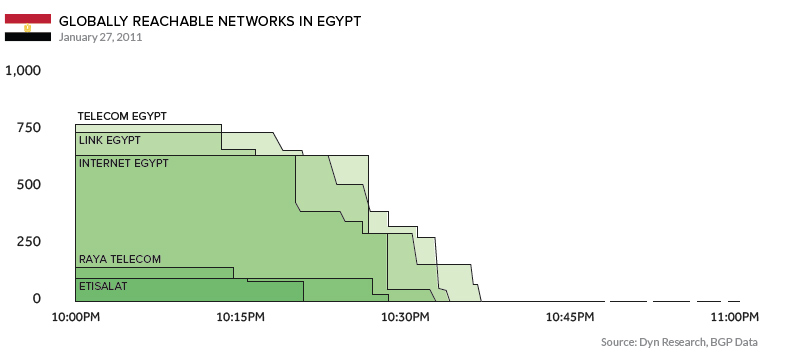
The Egyptian government was able to quickly and effectively shut down the chokepoints that connect its citizens to the outside world. Etisalat, for example, is a centrally located routing system that could see up to 58% of Egypt’s IP addresses.
In other words, Mubarak was essentially able to blockade every website in the world by making a few simple phone calls.
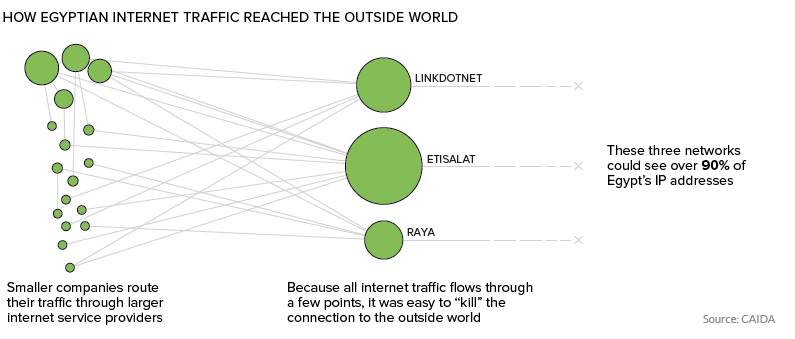
A New Era Of Internet Censorship
Egypt’s dramatic internet shutdown became a new template for other precarious regimes, but also sparked a broader global conversation around online censorship.
Today’s infographic comes to us from WhoIsHostingThis and it provides a detailed look at varying levels of internet censorship around the world today.

Internet users in North America and Europe enjoy relatively unfettered access to online content, while most countries in Asia, Africa, and the Middle East have some level of censorship. Torrenting is restricted in almost every country in the world, with a notable exception being Switzerland, where a laissez-faire approach is applied to downloading content for personal consumption.
It’s also worth noting that this map does not address government surveillance, which is ubiquitous even in countries with high levels of internet freedom.
The Anti-Information Age
If you want to liberate a country, give them the internet
–Wael Ghonim, Egyptian internet activist
Much of the world’s population accesses an internet that is at least partially censored. Countries have different motivations for restricting access and filtering content. Below are a few high-profile examples.
China
When most people think of internet censorship, China springs to mind. This makes sense as the country has a small army (upwards of 50,000 people) monitoring internet activity at all times. Also, much like Egypt, the government forces all online traffic through a mere three central routing systems. This makes it easy for censors to sift through all data entering and leaving the country.
China’s censorship apparatus is so advanced, it can take a very granular approach to repression and enforcement.
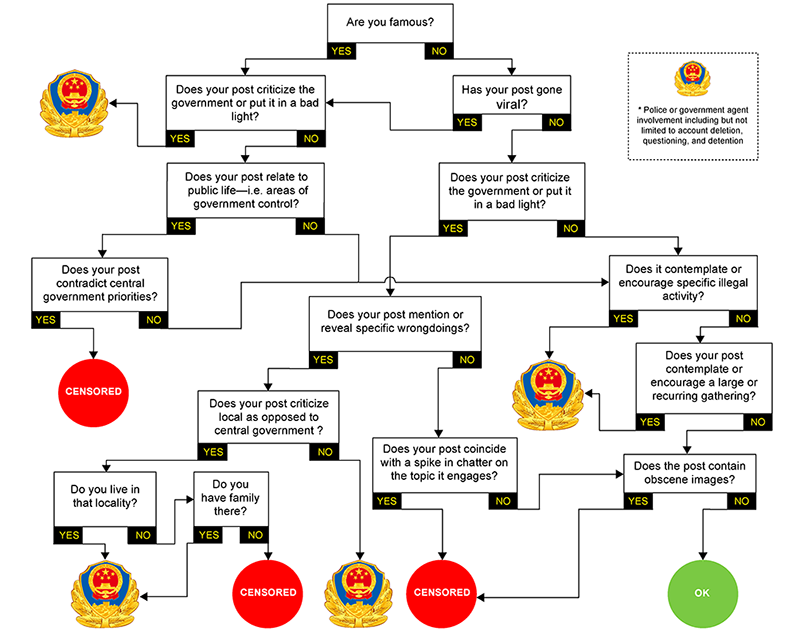
Turkey
The country’s swelling blacklist of 100,000 websites, coupled with harsh penalties for any whiff of anti-government sentiment, have created an extremely restrictive environment for Turkish internet users.
Ethiopia
In 2016, the government of Ethiopia blocked access to social networking sites to prevent cheating during the university entrance exam period.
North Korea
Unauthorized surfing of the internet is a dangerous activity in the Hermit Kingdom. The primary smartphones, tablets, operating systems, and browsers used in the country were all developed by the government, and content on the 5,000 or so accessible websites is tightly controlled.
Slipping Through the Firewall
Even when censoring measures are pervasive and effective, people continually find ways to slip between the cracks. For years, people have used proxy servers and virtual private networks (VPNs) to access content beyond their country’s censorship wall, but censors are getting better at discovering proxy servers and simply blocking them as they would any other site.
As a result, newer techniques are gaining popularity:
Steganography
Steganography is the science of hiding information. Basically, an innocuous file like an image can be stealthily encoded with information to evade detection by censors. Even changing a single pixel on a series of images can be used to relay a message, provided the recipient knows what to look for.
Refraction Networking
This circumvention tool uses partnerships with ISPs and other network operators to provide Internet freedom to users. Rather than trying to hide individual proxies, whole networks outside the censored country can become a conduit for the free flow of information.
Digital Transformation
Mapped: The Number of AI Startups By Country
Over the past decade, thousands of AI startups have been funded worldwide. See which countries are leading the charge in this map graphic.
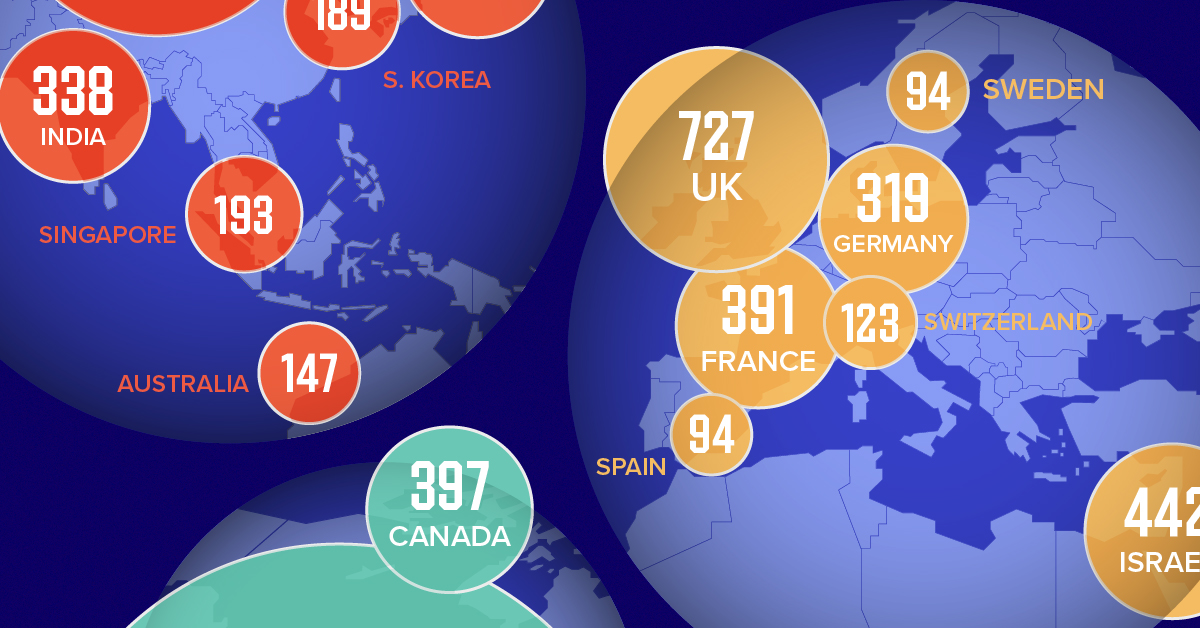
Mapped: The Number of AI Startups By Country
This was originally posted on our Voronoi app. Download the app for free on iOS or Android and discover incredible data-driven charts from a variety of trusted sources.
Amidst the recent expansion of artificial intelligence (AI), we’ve visualized data from Quid (accessed via Stanford’s 2024 AI Index Report) to highlight the top 15 countries which have seen the most AI startup activity over the past decade.
The figures in this graphic represent the number of newly funded AI startups within that country, in the time period of 2013 to 2023. Only companies that received over $1.5 million in private investment were considered.
Data and Highlights
The following table lists all of the numbers featured in the above graphic.
| Rank | Geographic area | Number of newly funded AI startups (2013-2023) |
|---|---|---|
| 1 | 🇺🇸 United States | 5,509 |
| 2 | 🇨🇳 China | 1,446 |
| 3 | 🇬🇧 United Kingdom | 727 |
| 4 | 🇮🇱 Israel | 442 |
| 5 | 🇨🇦 Canada | 397 |
| 6 | 🇫🇷 France | 391 |
| 7 | 🇮🇳 India | 338 |
| 8 | 🇯🇵 Japan | 333 |
| 9 | 🇩🇪 Germany | 319 |
| 10 | 🇸🇬 Singapore | 193 |
| 11 | 🇰🇷 South Korea | 189 |
| 12 | 🇦🇺 Australia | 147 |
| 13 | 🇨🇭 Switzerland | 123 |
| 14 | 🇸🇪 Sweden | 94 |
| 15 | 🇪🇸 Spain | 94 |
From this data, we can see that the U.S., China, and UK have established themselves as major hotbeds for AI innovation.
In terms of funding, the U.S. is massively ahead, with private AI investment totaling $335 billion between 2013 to 2023. AI startups in China raised $104 billion over the same timeframe, while those in the UK raised $22 billion.
Further analysis reveals that the U.S. is widening this gap even more. In 2023, for example, private investment in the U.S. grew by 22% from 2022 levels. Meanwhile, investment fell in China (-44%) and the UK (-14.1%) over the same time span.
Where is All This Money Flowing To?
Quid also breaks down total private AI investment by focus area, providing insight into which sectors are receiving the most funding.
| Focus Area | Global Investment in 2023 (USD billions) |
|---|---|
| 🤖 AI infrastructure, research, and governance | $18.3 |
| 🗣️ Natural language processing | $8.1 |
| 📊 Data management | $5.5 |
| ⚕️ Healthcare | $4.2 |
| 🚗 Autonomous vehicles | $2.7 |
| 💰 Fintech | $2.1 |
| ⚛️ Quantum computing | $2.0 |
| 🔌 Semiconductor | $1.7 |
| ⚡ Energy, oil, and gas | $1.5 |
| 🎨 Creative content | $1.3 |
| 📚 Education | $1.2 |
| 📈 Marketing | $1.1 |
| 🛸 Drones | $1.0 |
| 🔒 Cybersecurity | $0.9 |
| 🏭 Manufacturing | $0.9 |
| 🛒 Retail | $0.7 |
| 🕶️ AR/VR | $0.7 |
| 🛡️ Insurtech | $0.6 |
| 🎬 Entertainment | $0.5 |
| 💼 VC | $0.5 |
| 🌾 Agritech | $0.5 |
| ⚖️ Legal tech | $0.4 |
| 👤 Facial recognition | $0.3 |
| 🌐 Geospatial | $0.2 |
| 💪 Fitness and wellness | $0.2 |
Attracting the most money is AI infrastructure, research, and governance, which refers to startups that are building AI applications (like OpenAI’s ChatGPT).
The second biggest focus area is natural language processing (NLP), which is a type of AI that enables computers to understand and interpret human language. This technology has numerous use cases for businesses, particularly in financial services, where NLP can power customer support chatbots and automated wealth advisors.
With $8 billion invested into NLP-focused startups during 2023, investors appear keenly aware of this technology’s transformative potential.
Learn More About AI From Visual Capitalist
If you enjoyed this graphic, be sure to check out Visualizing AI Patents by Country.
-

 Markets6 days ago
Markets6 days agoVisualized: Interest Rate Forecasts for Advanced Economies
-

 Markets2 weeks ago
Markets2 weeks agoEconomic Growth Forecasts for G7 and BRICS Countries in 2024
-

 Wealth2 weeks ago
Wealth2 weeks agoCharted: Which City Has the Most Billionaires in 2024?
-

 Technology2 weeks ago
Technology2 weeks agoAll of the Grants Given by the U.S. CHIPS Act
-

 Green2 weeks ago
Green2 weeks agoThe Carbon Footprint of Major Travel Methods
-

 United States1 week ago
United States1 week agoVisualizing the Most Common Pets in the U.S.
-

 Culture1 week ago
Culture1 week agoThe World’s Top Media Franchises by All-Time Revenue
-

 Best of1 week ago
Best of1 week agoBest Visualizations of April on the Voronoi App

